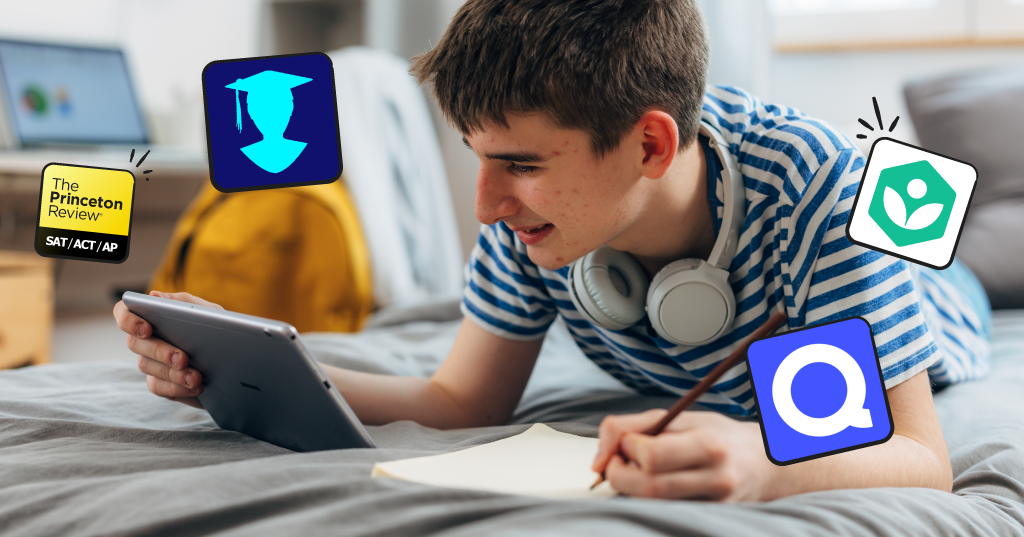Parents, do these next few phrases sound familiar?
“Just five more minutes — let me finish this game!”
“I’m so BORED! I have to watch TV.”
“Why can’t I play Fortnite?! I’ve done all my homework and all my friends are online right now.”
Screen time is one of the constant battles families have in the digital age. Gone are the days of just cable TV — kids now have access to countless streaming platforms on TVs, tablets, and gaming consoles. There are apps and phones and all sorts of devices vying for their attention.
Managing your kid’s screen time can feel like whack-a-mole, but it also comes in handy on long car trips or hard days after work. It’s a double-edged sword for modern parents, that’s for sure. But how much screen time is too much? Let's dive into this important topic and explore some practical tips for your family.
Understanding Screen Time Guidelines
How much screen time is too much will depend on your child's age and developmental stage, so it’s super important to be aware of the general guidelines as they get older. Here’s what the American Academy of Pediatrics (AAP) recommends by age:
For children younger than 18 months
Avoid the use of screen media other than video chatting — think quick calls with grandparents or with a parent on a work trip.
18 to 24 months
Introduce high-quality programming or apps with parents or caregivers, and limit time on screens to less than one hour per day. Fortunately, there are a ton of educational shows aimed at younger children, like CoCoMelon and Ms. Rachel.
2 to 5 years
Limit screen time to one hour per day (three hours on weekends) of high-quality programming, and watch it together to help them understand what they are seeing. Now’s a good time to get started with classics like Sesame Street and modern popular favorites like Bluey.
6 years and older
Set consistent limits on the amount of time spent on devices and watching screens, and ensure screen time doesn't interfere with adequate sleep, physical activity, and their social life.
As kids mature, their taste in television and movies will change wildly. They’ll also become more interested in apps, games, and eventually social media platforms as they hit their teenage years.
It’s okay to give them more screen time when they act responsibly, just as it’s equally important to reel them back in when things get out of hand.
How Much Screen Time Is Too Much?
We’ve talked about the limits that pediatricians recommend, but life doesn’t make things easy. There will be days where everything is hard and your child will have more screen time than usual. And that’s okay! No family is perfect.
But when excessive screen time starts to become a problem, you’ll notice things change both physically and emotionally. Here are some signs that your child may be spending too much time in front of screens:
Crankiness: If your child becomes cranky or irritable after screen time, it may be a sign that they need a break — no matter how long or short the time period seems.
Inability to transition: After taking away the device or turning off the TV, your child pouts, gets emotional, or refuses to do something else.
Difficulty sleeping: Screen time close to bedtime can interfere with sleep patterns, leading to difficulty falling or staying asleep.
Losing interest in other activities: When screen time becomes the primary source of entertainment, children may lose interest in outdoor play, reading, or other activities.
Physical health changes: If your child’s life starts revolving around indoor sedentary screen time, it can affect things like blood pressure, weight, eye strain, and more.
Setting Screen Time Limits
Establishing screen time limits can help you strike a balance between digital entertainment and the real world. Here are some tips for getting started.
Fill out a tech contract together
Sit down and create a plan that outlines specific screen time rules and schedules for the entire family. We’ve even got a free one you can download and print out!
Use parental controls
Set up parental controls on devices to limit access to age-appropriate content and monitor screen time usage. Bark’s screen time feature lets you get super granular with daily limits — like blocking YouTube automatically after bedtime or restricting all apps during the school day. You can even pause everything on their device whenever they need a breather.
Encourage real-world activities
Make sure your child does other activities like reading, playing outside, or arts and crafts. Children have been just fine without screens for thousands of years — they’ll be okay without constant technology (despite what they may tell you).
Lead by example
Be a role model by demonstrating healthy screen time habits and engaging in screen-free activities with your child. We know, this is definitely a challenge sometimes when you have to make dinner, get younger kids ready for bed all while answering work emails. But try and set down your device during dinner when possible.
Learn More About Bark
Bark’s screen time scheduling is an important part of our product, but there’s so much more that comes with it. You can also track location and block websites and apps, but it’s Bark’s content monitoring that makes it an absolute game-changer when it comes to online safety.
Bark scans your kid’s social media accounts, texts, emails, and files for potential issues. If something concerning is found — like sexting, online predators, bullying, and depression — you’ll get an alert so you can check in and make sure everything’s okay. Start your free, 7-day trial today, or learn more about the Bark Phone, which is our phone designed specifically with parents in mind that comes with Bark built in, along with a host of cool features like contact approvals, daily time limits, and much more.
Read more
Bark helps families manage and protect their children’s digital lives.





